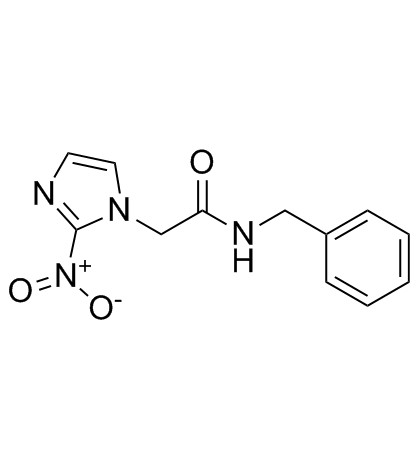Unveiling benznidazole's mechanism of action through overexpression of DNA repair proteins in Trypanosoma cruzi.
Matheus Andrade Rajão, Carolina Furtado, Ceres Luciana Alves, Danielle Gomes Passos-Silva, Michelle Barbi de Moura, Bruno Luiz Schamber-Reis, Marianna Kunrath-Lima, Aline Araújo Zuma, João Pedro Vieira-da-Rocha, Juliana Borio Ferreira Garcia, Isabela Cecília Mendes, Sérgio Danilo Junho Pena, Andrea Mara Macedo, Glória Regina Franco, Nadja Cristhina de Souza-Pinto, Marisa Helena Gennari de Medeiros, Angela Kaysel Cruz, Maria Cristina Machado Motta, Santuza Maria Ribeiro Teixeira, Carlos Renato Machado
Index: Environ. Mol. Mutagen. 55(4) , 309-21, (2014)
Full Text: HTML
Abstract
Benznidazole (BZ) is the most commonly used drug for the treatment of Chagas disease. Although BZ is known to induce the formation of free radicals and electrophilic metabolites within the parasite Trypanosoma cruzi, its precise mechanisms of action are still elusive. Here, we analyzed the survival of T. cruzi exposed to BZ using genetically modified parasites overexpressing different DNA repair proteins. Our results indicate that BZ induces oxidation mainly in the nucleotide pool, as heterologous expression of the nucleotide pyrophosphohydrolase MutT (but not overexpression of the glycosylase TcOgg1) increased drug resistance in the parasite. In addition, electron microscopy indicated that BZ catalyzes the formation of double-stranded breaks in the parasite, as its genomic DNA undergoes extensive heterochromatin unpacking following exposure to the drug. Furthermore, the overexpression of proteins involved in the recombination-mediated DNA repair increased resistance to BZ, reinforcing the idea that the drug causes double-stranded breaks. Our results also show that the overexpression of mitochondrial DNA repair proteins increase parasite survival upon BZ exposure, indicating that the drug induces lesions in the mitochondrial DNA as well. These findings suggest that BZ preferentially oxidizes the nucleotide pool, and the extensive incorporation of oxidized nucleotides during DNA replication leads to potentially lethal double-stranded DNA breaks in T. cruzi DNA.Copyright © 2013 Wiley Periodicals, Inc.
Related Compounds
| Structure | Name/CAS No. | Molecular Formula | Articles |
|---|---|---|---|
 |
Guanine
CAS:73-40-5 |
C5H5N5O | |
 |
Benznidazole
CAS:22994-85-0 |
C12H12N4O3 |
|
Cyclic di-GMP riboswitch-regulated type IV pili contribute t...
2015-03-01 [J. Bacteriol. 197(5) , 819-32, (2015)] |
|
Electrochemical tuning of oxygen-containing groups on graphe...
2014-06-28 [Phys. Chem. Chem. Phys. 16(24) , 12178-82, (2014)] |
|
Development of an electrochemical surface-enhanced Raman spe...
2015-09-07 [Phys. Chem. Chem. Phys. 17 , 21356-63, (2015)] |
|
Combined rational design and a high throughput screening pla...
2015-05-15 [J. Biol. Chem. 290 , 12879-98, (2015)] |
|
Polyphenol extract from evening primrose pomace alleviates e...
2014-11-01 [Naunyn Schmiedebergs Arch. Pharmacol. 387(11) , 1069-78, (2014)] |